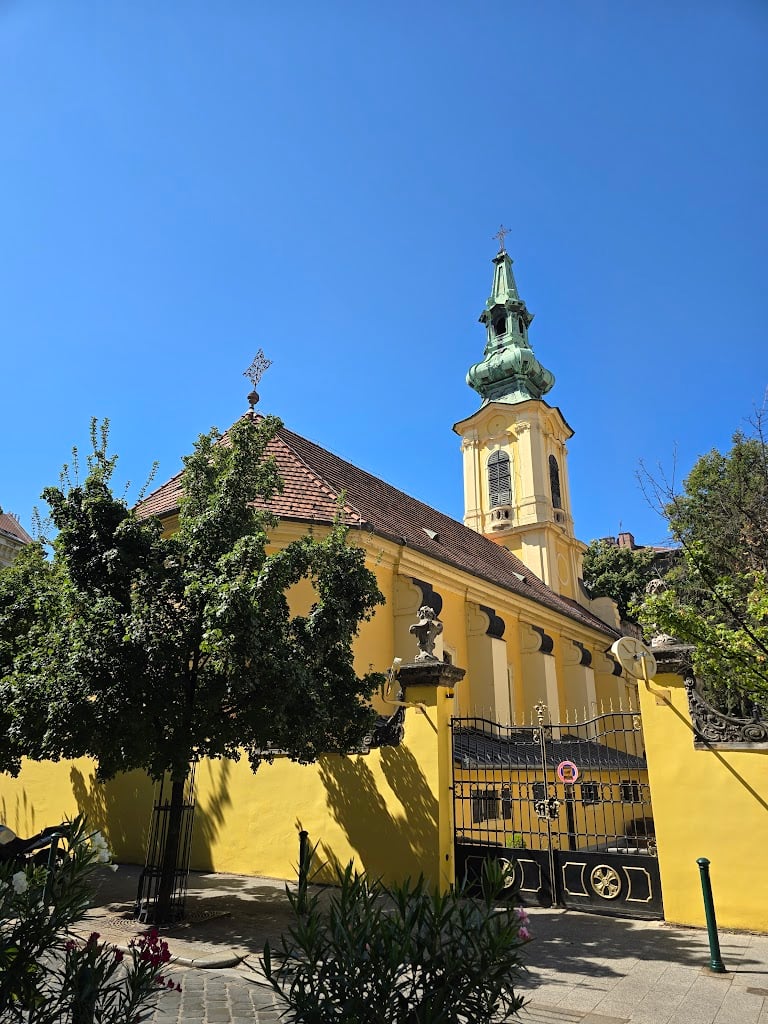Serbian Church (Szerb Templom)



Ask ThatchGPT
Suggest a local expert to plan my trip
Suggest an unique itinerary for my Budapest trip
What foods do Budapest locals eat
What are some true hidden gems in Budapest
Help me brainstorm trip ideas for Budapest
Help me plan a family-friendly trip to Budapest
What people say
Pedro Pereira
Available for hire
"The Church of St. George stands as a testament to the Serbian community's enduring presence in Budapest, tracing its roots back to the 16th and 17th centuries when Serbs settled in the area during Ottoman rule. Historical accounts suggest that a Serbian place of worship existed here even before the 1526 Battle of Mohács, with records from 1655 noting a church and a cemetery near the Kecskemét Gate. Ottoman traveler Evliya Çelebi also documented the presence of a Serbian church in Pest during his travels in the mid-17th century. However, the original church was destroyed during the Habsburg conquest in 1686.
After the 1690 Great Migrations of the Serbs, the growing community received permission to build a new church, which was completed in 1698 under the guidance of Patriarch Arsenije III Čarnojević. By the early 18th century, the expanding Serbian population necessitated a more substantial structure. In 1733, a new Baroque-style church was constructed, designed by Salzburg-born architect András Mayerhoffer. The church’s elegant bell tower, added in 1752, and its original iconostasis, crafted by Stefan Tenecki, highlighted its artistic significance.
In 1838, the church suffered damage during a devastating flood in Pest, leading to the replacement of its iconostasis in 1850 with a Neo-Renaissance design by a Greek artist. The churchyard, surrounded by a stone wall, features tombstones of Serbian believers, further underscoring its historical importance. A ceramic depiction of St. George slaying the dragon adorns the corner of Szerb Street and Veres Pálné Street, serving as a visual reminder of the church's dedication.
For centuries, the Church of St. George was one of two principal Serbian churches in Budapest, alongside the Church of Saint Demetrius. However, after the latter's destruction in 1949 following World War II, St. George’s became the sole remaining Serbian place of worship in the city. Archaeological research in 1959 confirmed the site’s deep historical layers, revealing evidence of earlier structures beneath the current building. Today, the church remains a vital link to Budapest's multicultural heritage, preserving the history and identity of the Serbian community in the city."
Read more in:
Mentioned in these guides
About Serbian Church (Szerb Templom)
Get the inside scoop on Serbian Church (Szerb Templom) from local experts, travel creators, and tastemakers. Browse genuine trip notes, Serbian Church (Szerb Templom) reviews, photos, travel guides, and itineraries from real travelers and plan your trip with confidence.
Website
Save this spot for later or start mapping out a new trip today
Try our AI Travel Assistant and get instant answers to any questions about your trip.
Ask ThatchGPT
